High in the Canadian Rockies, tourists wrestle with one another for that prime photo spot of Lake Louise, or Moraine Lake, or somewhere in Johnston Canyon, or any of a million other beautiful yet overcrowded spots in Banff National Park. Banff isn’t the only overcrowded place in the Rockies though – every year Kananaskis Country is filled with more people than it knows what to do with. (A slashed Alberta provincial park budget doesn’t help.) Photos of some gorgeous hikes end up looking more like queues at Disney World. Endless lines of tourists wait their turn to get their shot for social media. Don’t get me started on bear jams!
200 kilometres south of Banff however, lies a corner of the Rockies much more untouched. In the Crowsnest Pass often half the challenge of going hiking is finding directions to the unmarked trailhead itself! The benefit? Parking your car at that small trailhead – not another car in sight – and knowing that you’ve got the entire trail (and all the views) all to yourself.
Solitude Falls in the Crowsnest Pass lives up to its name. This waterfall is not well-trafficked at all, and as long as the barely visible trail/little bit of bushwhacking doesn’t scare you off, you’re almost guaranteed to have it all to yourself. In a world there that’s becoming increasingly rare, could anything be better?
The trail starts downhill along an atv track leading to a fantastic view of York Creek from above. Solitude Falls can be seen crashing down far below, surrounded by lush forest. Behind it rises the Highrock Range. After continuing down the path to the creek, bushwhacking up along a faint trail alongside the creek leads directly to the falls themselves.
If you’re driving down York Creek Road to visit Solitude Falls, I highly suggest driving an extra km to visit the equally beautiful York Creek Falls, another Crowsnest Pass hidden gem.
Continue reading this blog post for everything you need to know to experience Solitude Falls in the Crowsnest Pass for yourself, including distance, elevation gain, how to get there, the best time to visit, and lots of photos of my experience.
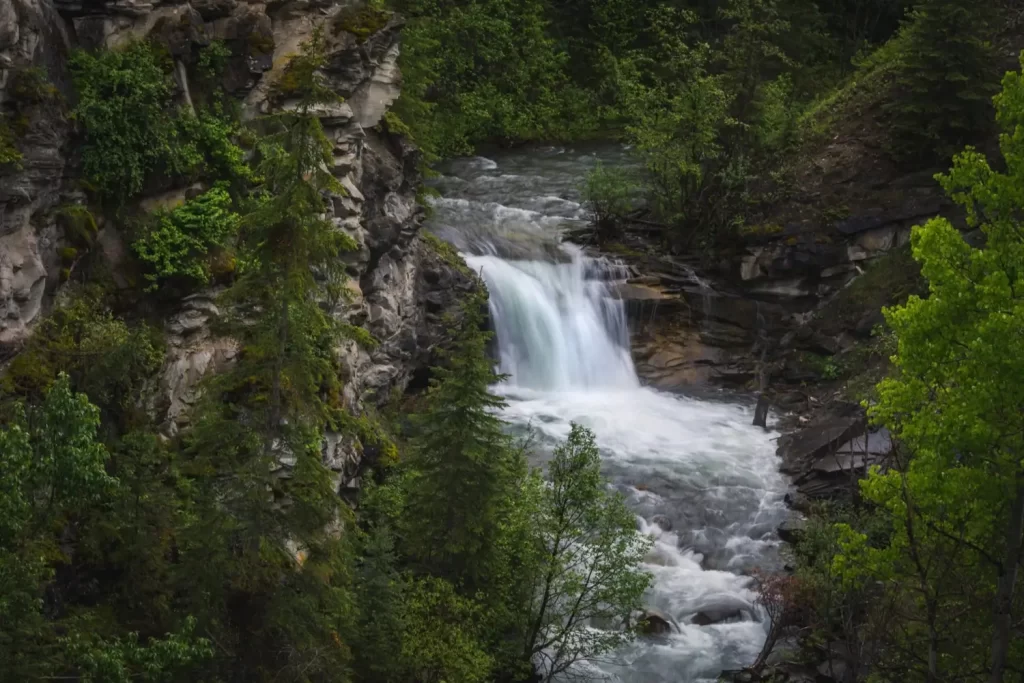
When hiking it’s important to avoid harmful practices such as disturbing plants or rock-stacking, or removing any natural object from flowers to rocks, as it’s important to leave the environment as natural as possible for the animals and for fellow hikers to enjoy in perpetuity. As many flowers as there are, there are few enough that if we all took one, then there wouldn’t be any left. Take only photos, leave only footprints.
If you haven’t heard of Leave No Trace principles, they’re also really essential to read up on before heading anywhere into the outdoors in general. Following these important principles basically means doing your best to leave beautiful places like Solitude Falls as good (if not better) than you found them, both for their preservation and for the enjoyment of other visitors.

Solitude Falls Round Trip Details
Distance: 1.4 KM / 0.9 MI
Elevation Gain: 98 M / 321 FT
Hiking Time: 40 MINS
Hiking & Safety Tips
- Prepare for the possibility of wildlife encounters. Bear spray is a must whenever travelling in bear country, as well as learning how to use it. Though your chance of an aggressive bear encounter is low, it is always better to be prepared with bear spray. Bear bells are proven to be an ineffective bear deterrent, and are actively discouraged by Parks Canada. The best way to let bears know you’re around is simply to use your voice. Make sure to keep a respectful distance from wildlife and never feed the animals. It may seem kind but it doesn’t just kill wildlife and put people in danger, it’s illegal.
- Research current trail conditions and make sure you are well-informed about the route before you leave, and assess if it is within your capability. Be aware of what time it gets dark and check the weather forecast. Make sure to tell someone where you’re going and when you expect to return. Every year as more and more people try hiking for the first time, the number of rescues goes up. Being prepared is the best defense.
- Pack everything you need for a successful hike, including enough water and energy-rich snacks. Remember to pack out everything you pack in though – don’t expect to find a convenient garbage can halfway up the trail. Bring appropriate layers (remember you’ll warm up once you start hiking) and sun protection. Hiking poles may be helpful but are not required. In addition to not leaving any garbage on the trail yourself, I highly recommend bringing a garbage bag and collecting any trash that you do see on the trail. You’re guaranteed to make the hike to Solitude Falls a more enjoyable experience for the next person.
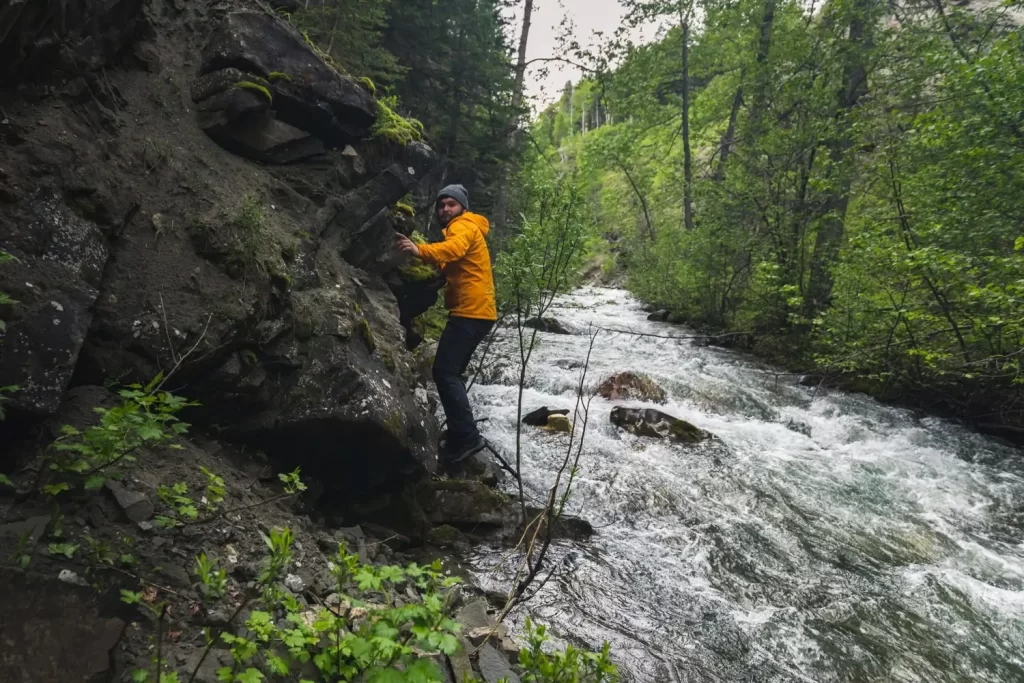
When to Visit Solitude Falls
Like many waterfalls in the Rockies, the best time of year to visit is in late Spring. Melting snow and recent rainfall mean that the water level is at its highest, and the waterfalls at their most dramatic. Later in the year waterfalls lose a lot of their power, with some drying up to not much more of a trickle. Solitude Falls never fully dries up and to the best of my knowledge flows well year round, but if visiting in late summer or autumn either try and time your visit with recent rainfall or lower your expectations accordingly.
How to Get to Solitude Falls Trailhead
Solitude Falls is located 3.7 km down York Creek Road just South of Coleman in the Livingstone PLUZ. Like nearly any access road you’re taking to a trailhead in the Crowsnest Pass, the road is rough but driveable with any car as long as you’re willing to slow down and drive carefully. Solitude Falls is an hour forty minutes from Lethbridge or two and a half from Calgary. Park along the side of the road next to where a small atv trail turns off on the left.
Click here to open the exact trailhead location in Google Maps.
Hiking to Solitude Falls
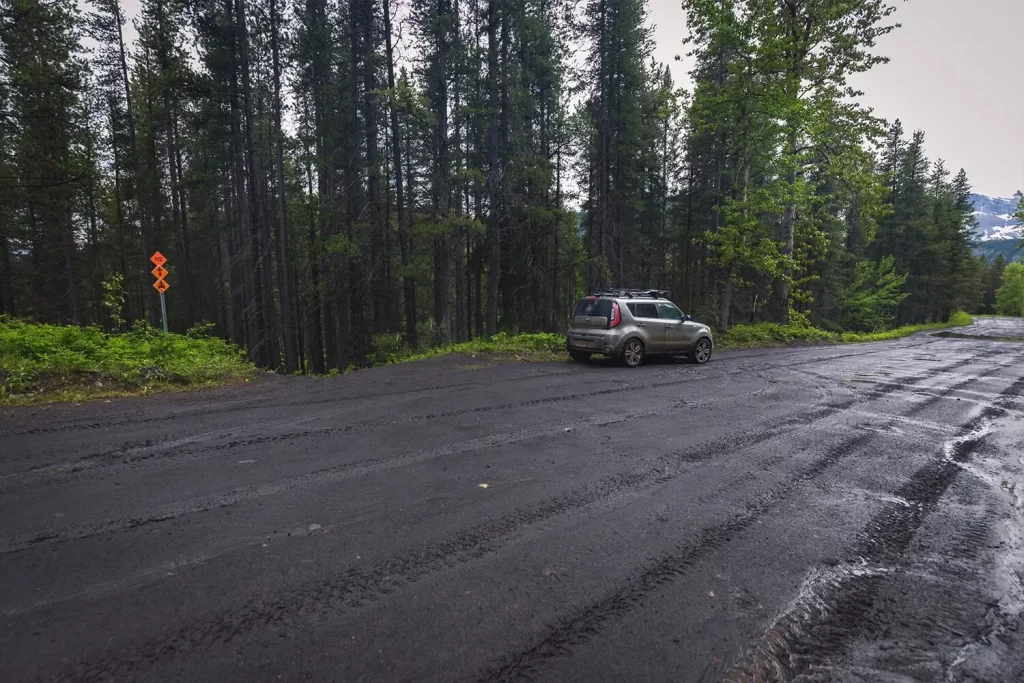
Parked on the side of the road where the atv trail turns off.
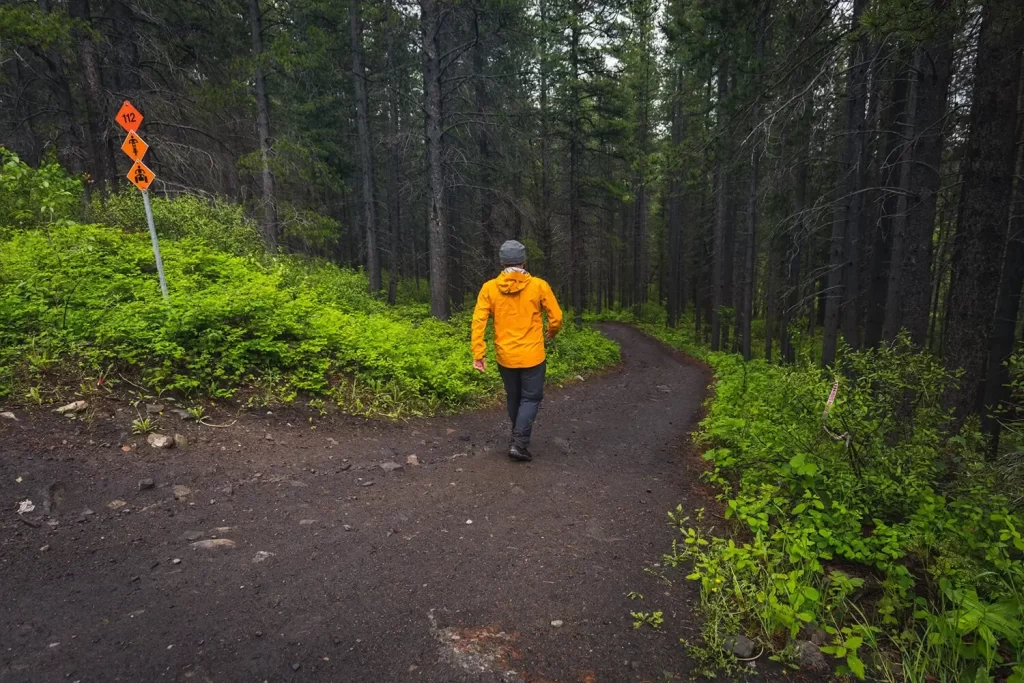
Heading towards York Creek.
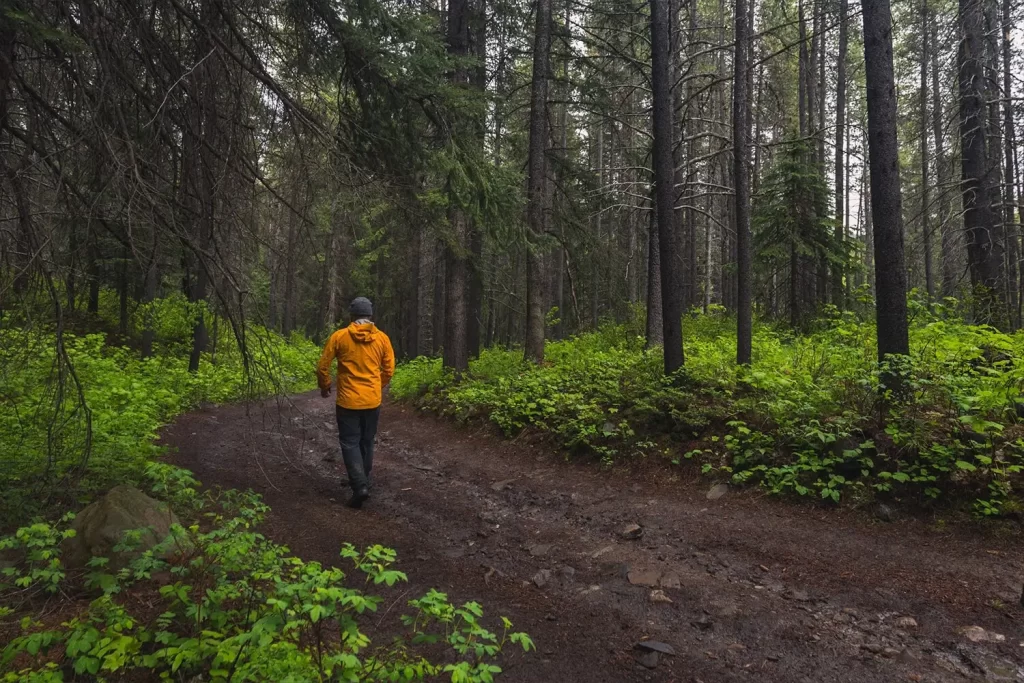
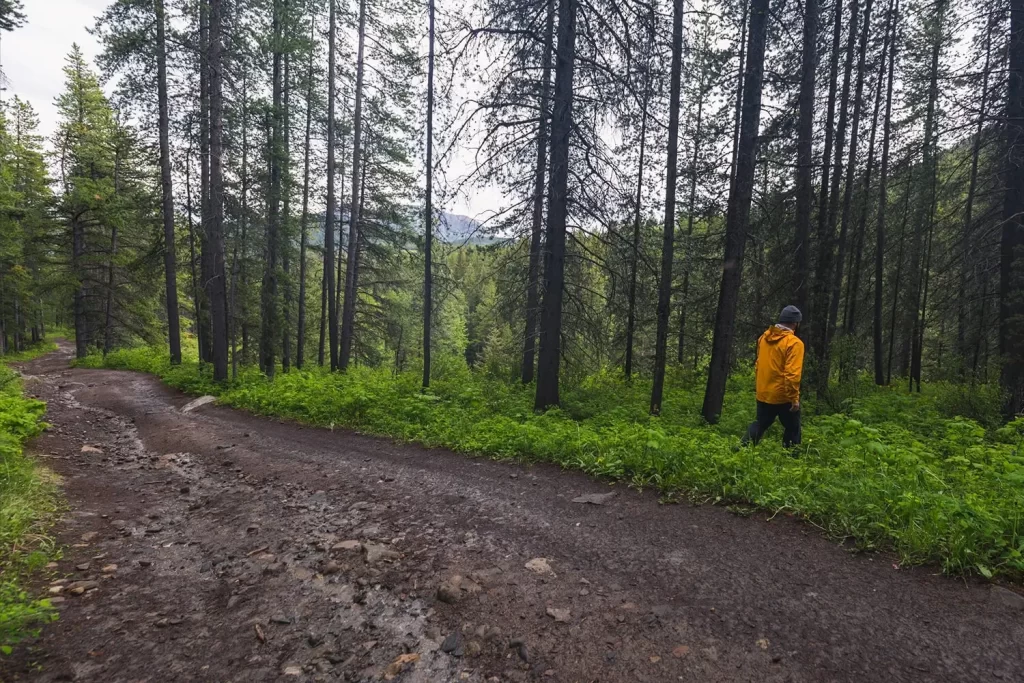
Just after the trail straightens out, and just before the large light rock seen in the ground, a faint trail cuts into the trees to view the falls from above.
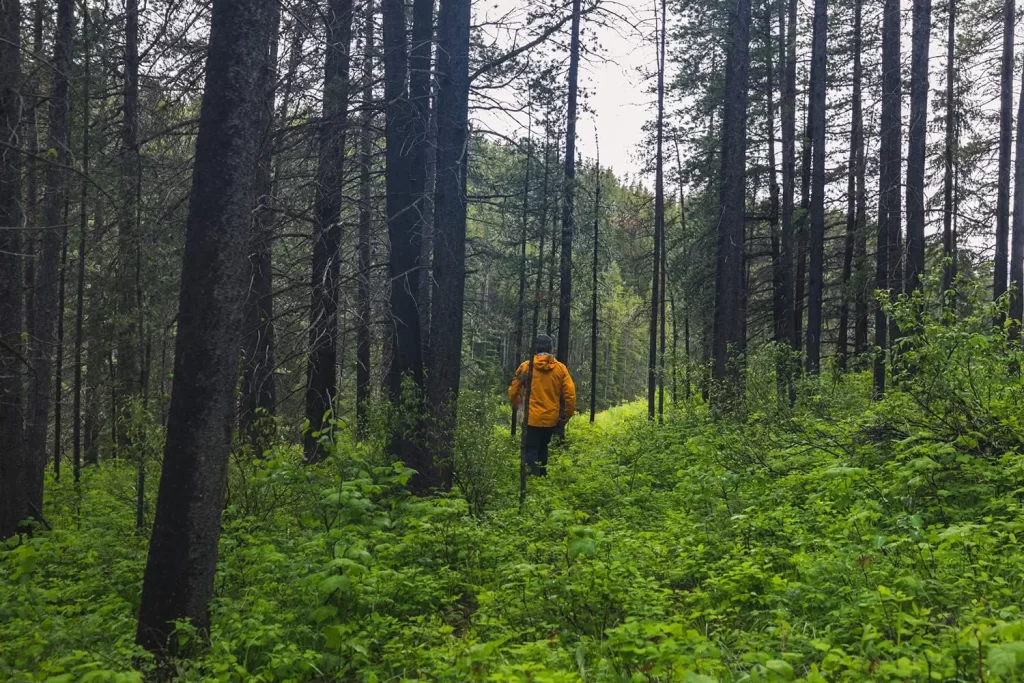
Impossible to see if you’re not looking for it but the trail is there!
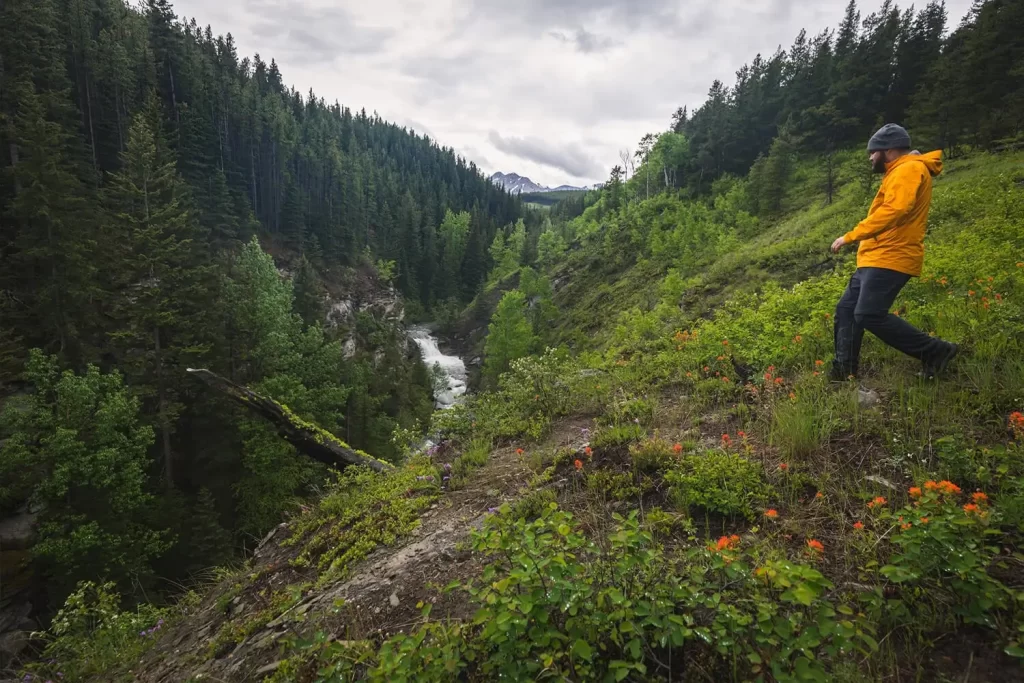
Solitude Falls from above.
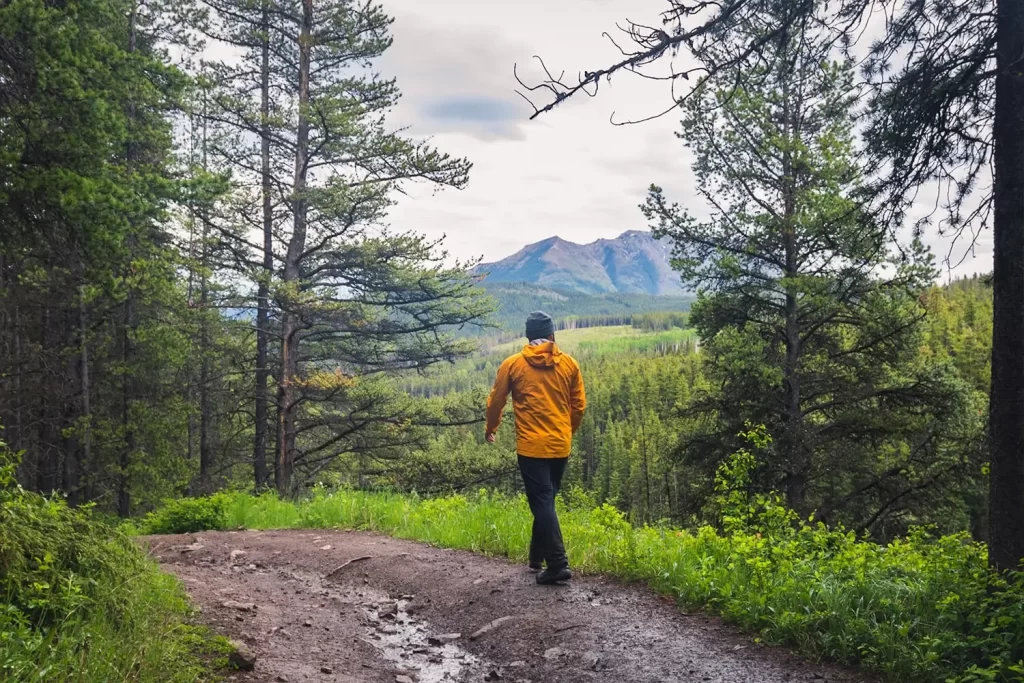
Views off the not-often seen backside of Turtle Mountain. After the viewpoint I’m back on the path, which leads down to the creek below.
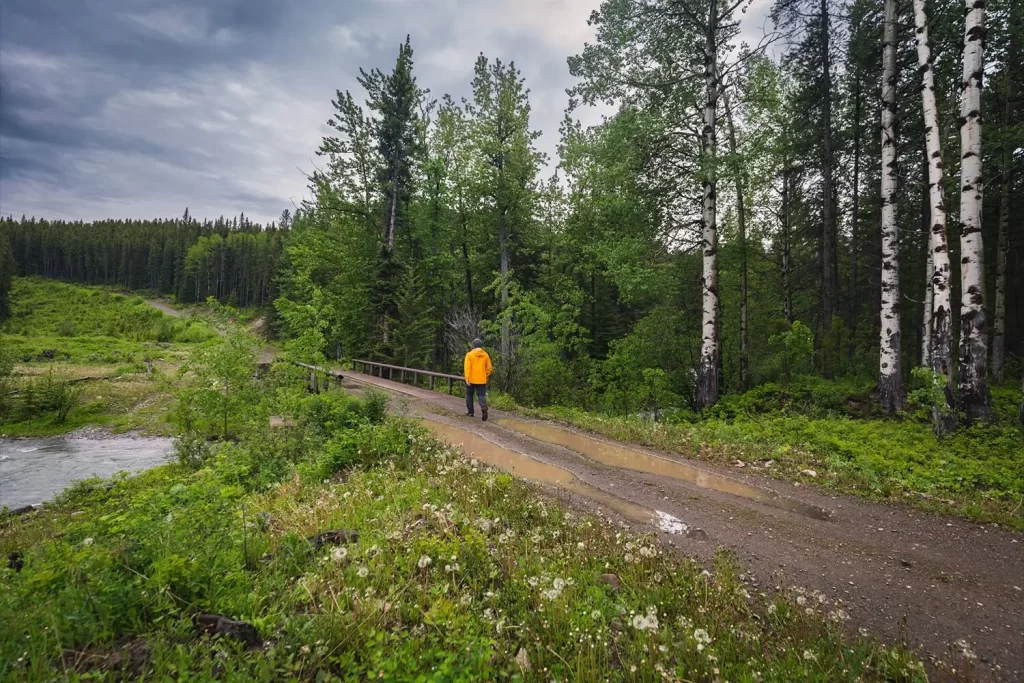
When finally down at the creek, crossing a small bridge to get to the other side.
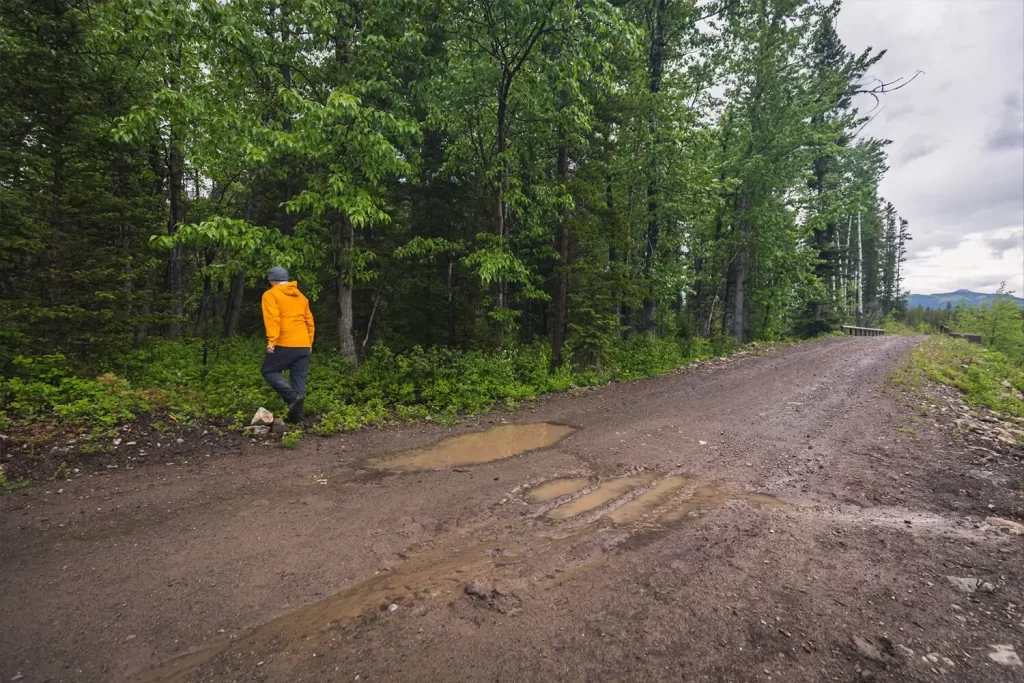
Just a short distance past the bridge, a small rock pile marks the trail. Much like the previous trail it’s east to miss if you’re not keeping your eyes peeled for it.

Somewhat visible trail. It comes and goes though so some bushwhacking is probably to be expected.
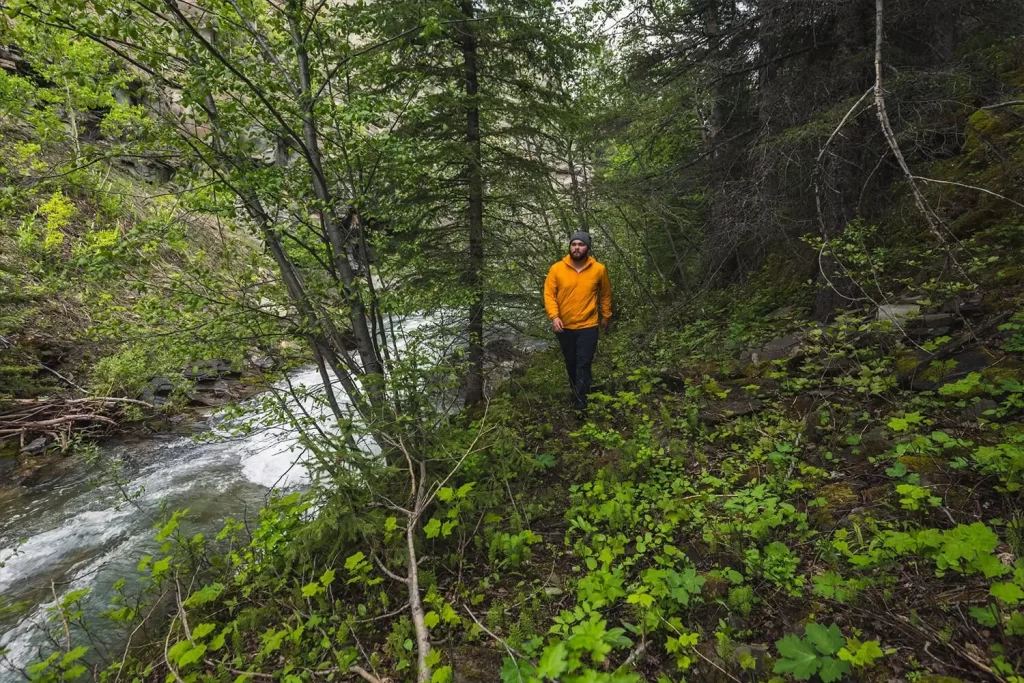
Continuing upstream.
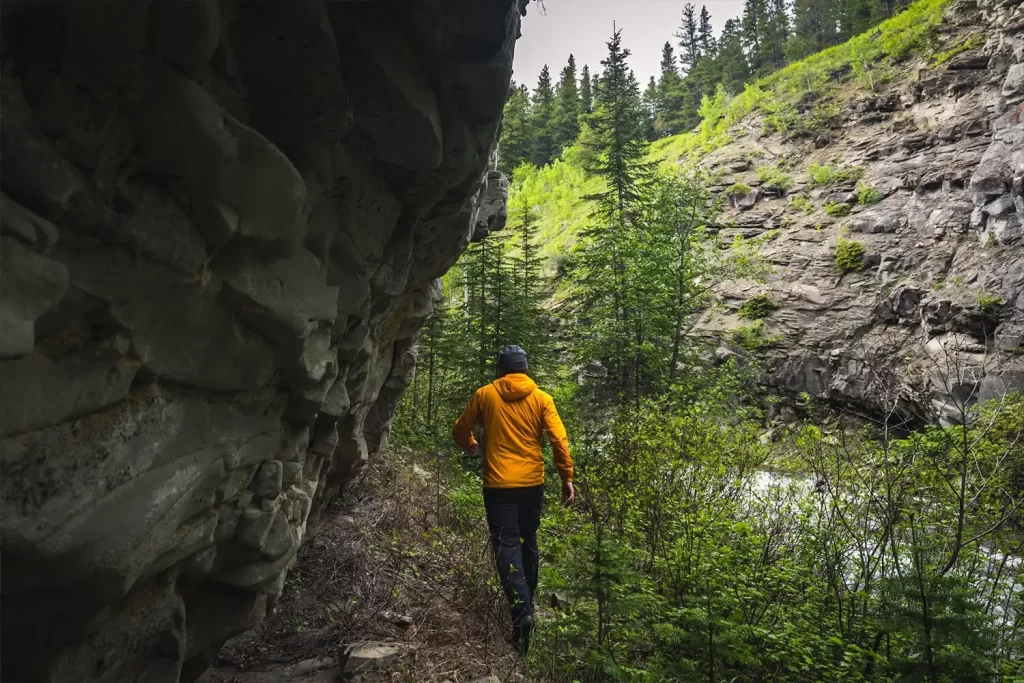
Walking underneath steep cliffs offers a respite from the brush.
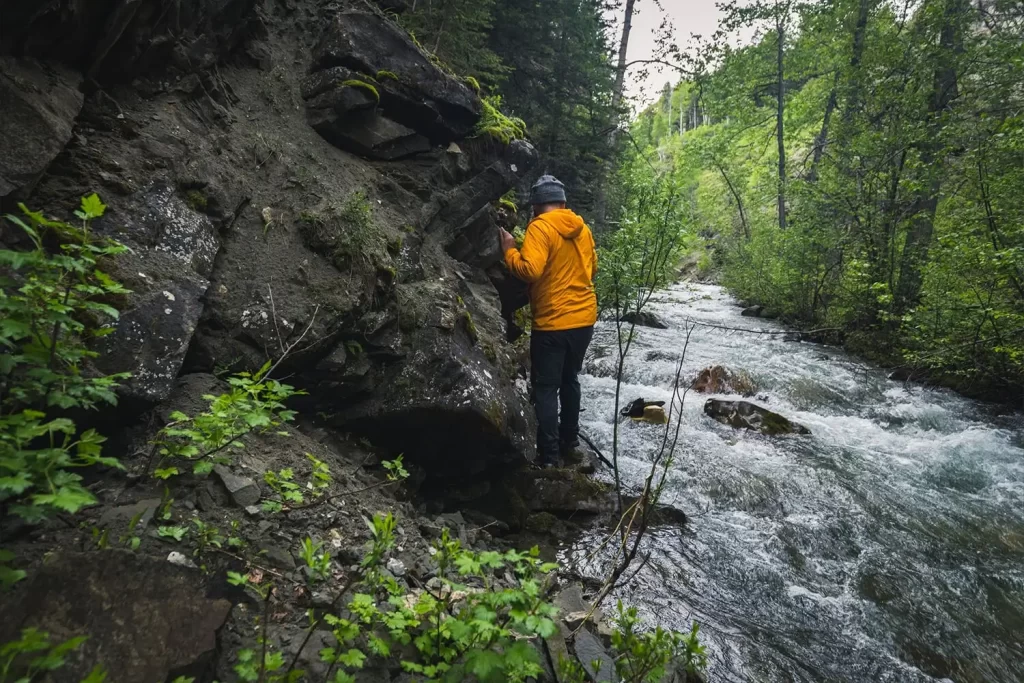
I ended up having to step in the water a little to navigate around this section but it’s also possible the trail might have gone up and to the left avoiding it.
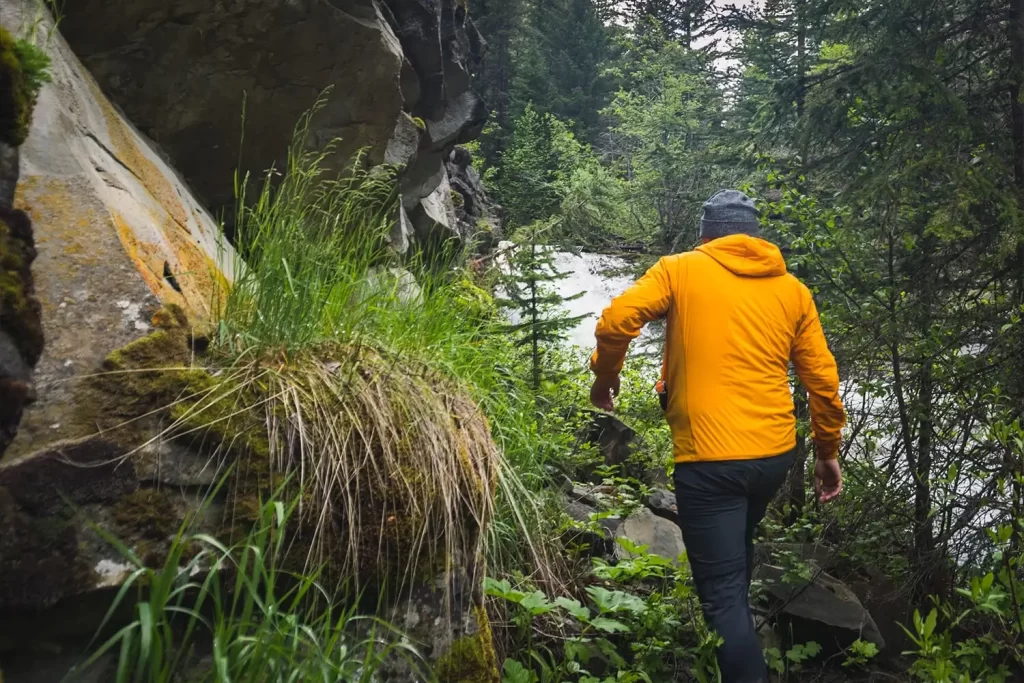
The final section is the most bushwhack-y but the views of the waterfall ahead make for good motivation.
Recommended Hiking Gear



Water is a must whenever I’m hiking, especially if the sun is going to be out. My favourite water filter I’ve used is the Katadyn BeFree 0.6L, which unlike other water filters I’ve used packs up really small and lightweight. For hikes where I know there won’t be any readily available water sources along the way, I make sure to bring my own. The Hydrapak Stow 1L bottle is my go-to, for the same reason that it’s made of a soft plastic that folds up and doesn’t take up any more extra space than necessary in my pack. Finally, Aquatabs are another great option for purifying water, with one tablet being suitable for one litre of water. I previously used the Grayl water filter while travelling internationally, and though I found its hard body more convenient for day to day use and easier to drink from, it has a little too much bulk for my fast-and-light style of hiking.



The secret to all my photos of gorgeous sunset and sunrise mountaintop views? A lot of hiking in the dark. And let me speak from personal experience when I say that the last thing that you want to happen when hiking is to be caught in the dark without a headlamp. I used the Black Diamond Spot 400 for years and it worked great – until I lost it on top of a mountain somewhere. The only downside to it was having to worry about the batteries dying, though there’s also a slightly more expensive version that has a rechargeable battery. Nowadays I’m using the Petzl Actik Core, which is a bit pricier than the more budget-friendly Black Diamond, but is also brighter, more comfortable (in my opinion), and has a hybrid power system that is rechargeable but can also take AAA batteries if needed.
You won’t see me using trekking poles on shorter hikes often – but on long hikes and backpacking trips, as well as certain scrambles, they are an absolute lifesaver. I’ve invested in a high quality ultra-lightweight pair of MSR DynaLock Ascent carbon poles which, while pricey, I don’t regret one bit. If you’re not entirely sure how much use you’re going to get out of a pair of trekking poles, the best budget-friendly option would be the Trekology Trek Z 2.0. Amazon does sell a lot of cheaper Made in China-style trekking poles for cheaper, but these usually are much much heavier and not worth buying.
All the best and most long-lasting cables and power banks I’ve ever owned have been Anker. I once had a phone cable from them that lasted me over three years of daily use! That’s why I keep an Anker PowerCore Essential 20K power bank on me. Like many people I use my phone for a lot of stuff when hiking (checking in with family, using online maps, taking photos, flying my drone) so I like to be prepared for that low battery warning by having a backup power source on me just in case.



The only socks I ever buy for myself are from Darn Tough, and I almost always make sure to wear them when hiking. After years of having no problems only wearing these comfortable and rugged socks for hikes, I accidentally wore a pair of no-name socks on a hike last year and ended up with blisters on both feet. Safe to say I’m back to sticking with the Darn Tough. And the best part? They have a lifetime guarantee, meaning that if they ever wear out you can send them back for a brand new pair. For hiking footwear I go between a pair of lightweight approach shoes for quick and dirty mountain ascents or anything involving scrambling and more heavy-duty boots for longer treks. I’ve worn a couple different versions of the lightweight but super durable Arc’teryx Konseal FL 2 approach shoes for a few years now and am very impressed with the durability. I also really like the thick toecap that keeps me protected every time I stumble into a root or large rock. For longer, tougher, or muddier treks I rely on my LOWA Camino EVO GTX, which I find insanely comfortable and made of very high quality.



I wear my Ar’teryx Gamma Lightweight Pants on every single hike I go on, and on many days when I’m not hiking. After several years of abuse they are still holding together extraordinarily well, with only a few small holes from where I’ve fallen down and some slight stains from being repeatedly coated with mud. They’re lightweight, breathable, and super comfortable. For lightweight and breathable hiking tops I’m a big fan of both the Patagonia Capilene Shirt and the MEC Core Shirt. My Arc’teryx Squamish Hoody shows up in a lot of my photos. It’s super lightweight and packable, and does a great job of cutting the wind while also being pretty breathable. I also have an Arc’teryx Atom Hoody and Arc’teryx Beta LT that I pull out for cooler or wetter conditions.
I hope you enjoyed this guide to hiking to Solitude Falls in the Crowsnest Pass! Feel free to leave any questions in the comment section below or to contact me directly via social media.
